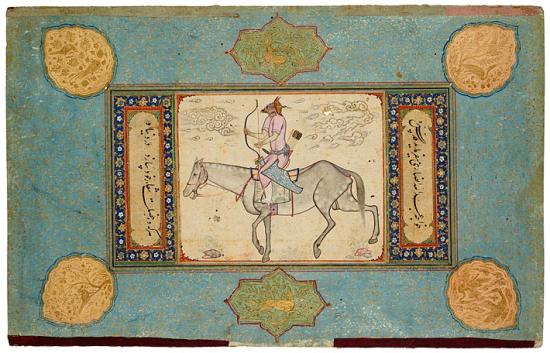Archer Riding an Aged Horse

Archer Riding an Aged Horse
Leaf from the Read Persian Album, after Muḥammad Calī Ibn Malik Ḥusain
Purchased by Pierpont Morgan, 1911
The central Asian rider and the exhausted, if not lame, horse find parallels in the works of the Safavid painter Muḥammad ˓Alī Ibn Malik Ḥusain (fl. ca. 1630–60). Recently such images have been seen as a symbol of humility—the necessary suppression of a man's ego (nafs)—one of the main tasks of a Sufi on his spiritual journey. The prose text, from Anṣārī's Munājāt reads: Whoever makes the ten qualities (of the Prophet) his watchword has completed his labor in this world and the next. The leaf was added to the album by Ḥasan Shāmlū, Ḥusain's son and successor as governor of Herat.
The Read Persian Album
Pierpont Morgan's 1911 purchase of two albums (one Persian, one Mughal) from Sir Charles Hercules Read, Keeper of British and Medieval Antiquities at the British Museum, London, proved to be an important turning point in the history of the Morgan Islamic collection. Belle da Costa Greene, Morgan's librarian, accompanied by art historian and collector Bernard Berenson, first saw paintings from the albums at the great exhibition of Islamic art in Munich the previous year. She wrote to Read that they were among the finest works exhibited there and that this important school should be represented in Morgan's collection, asking him to give Morgan the right of first refusal. The Persian album was begun by Husain Khān Shāmlū, governor of Herat (r. 1598–1618), and possibly continued by his son and successor, Hasān Shāmlū (d. 1646). Fifteen of its twenty-seven sheets, once bound accordion style, are presented here. Many of the paintings were made in Herat itself.